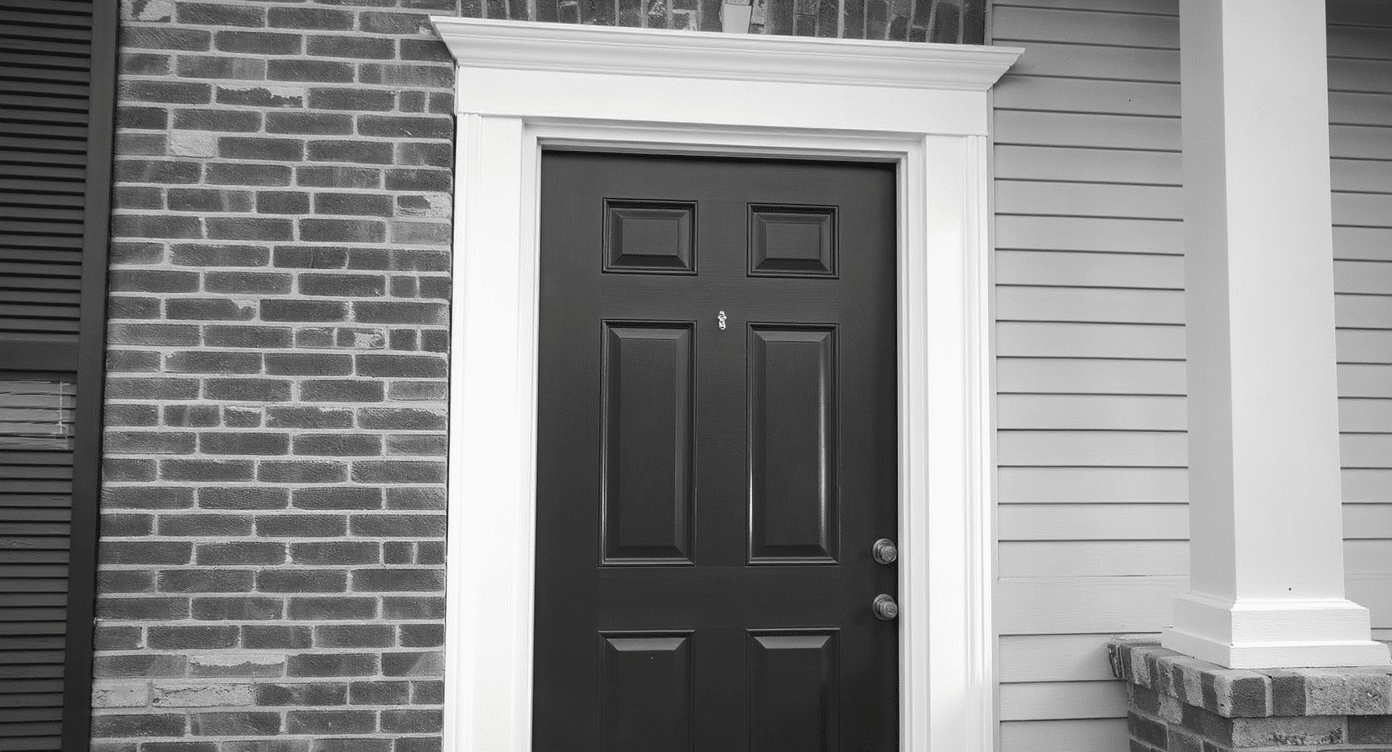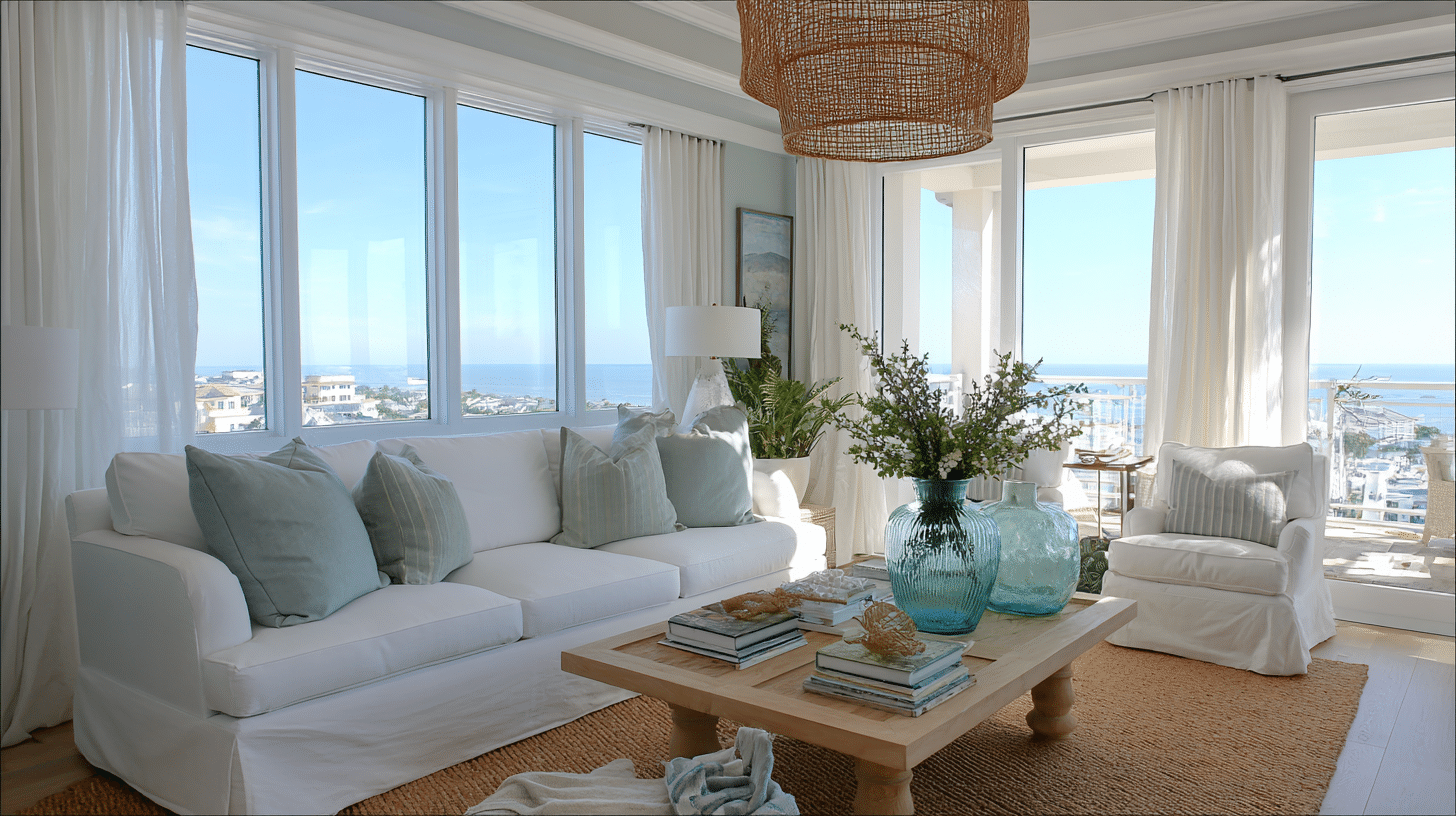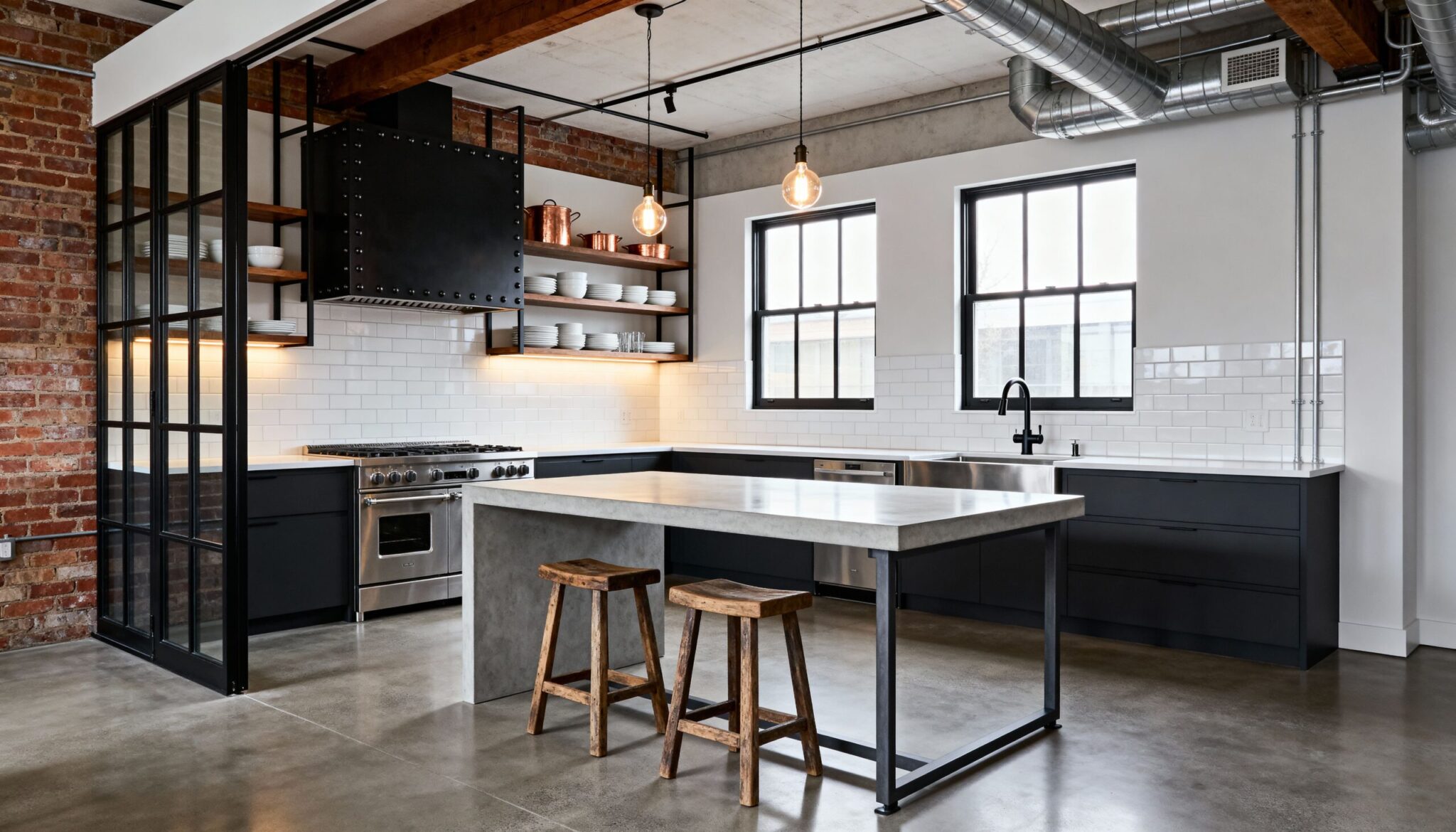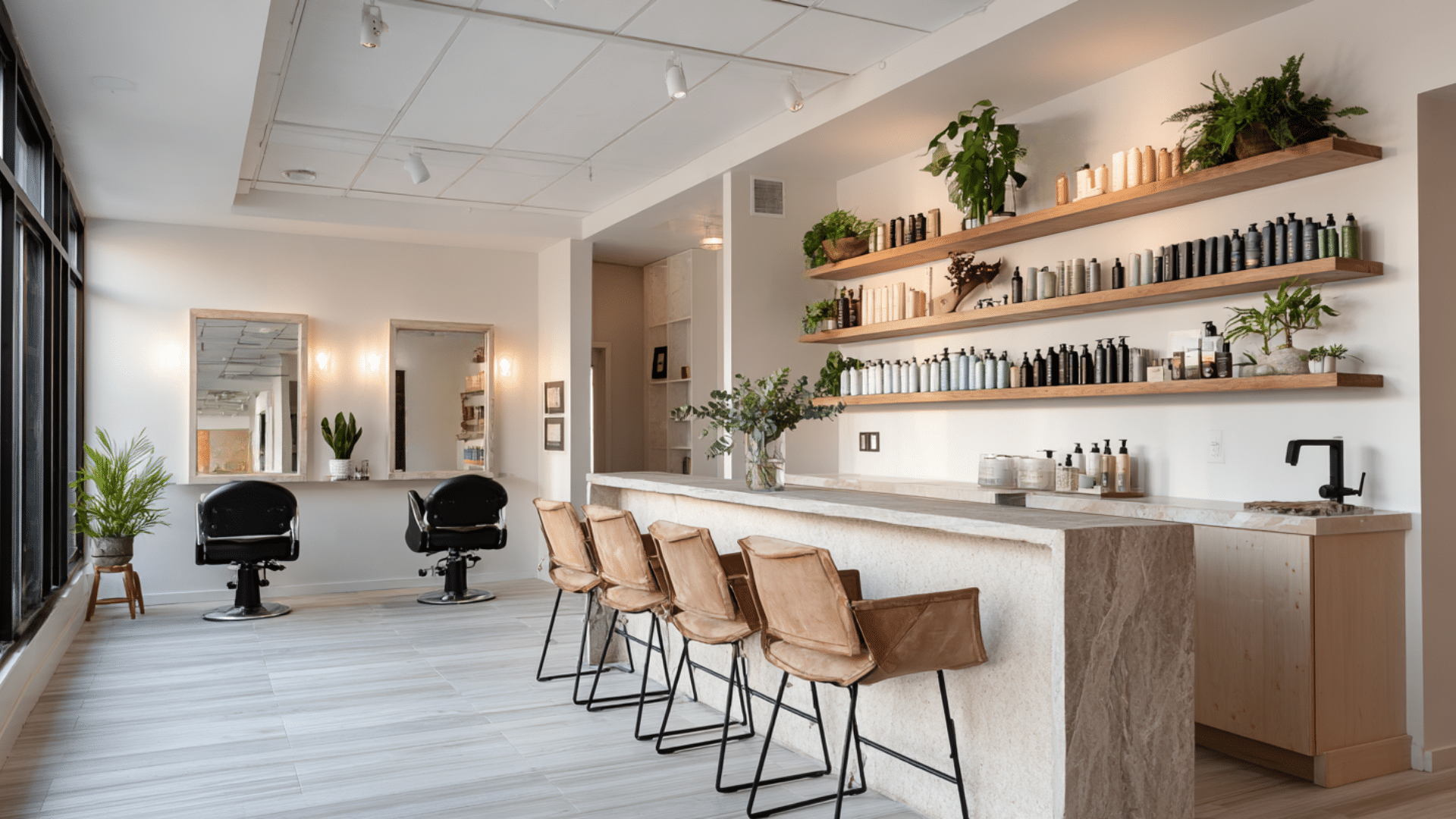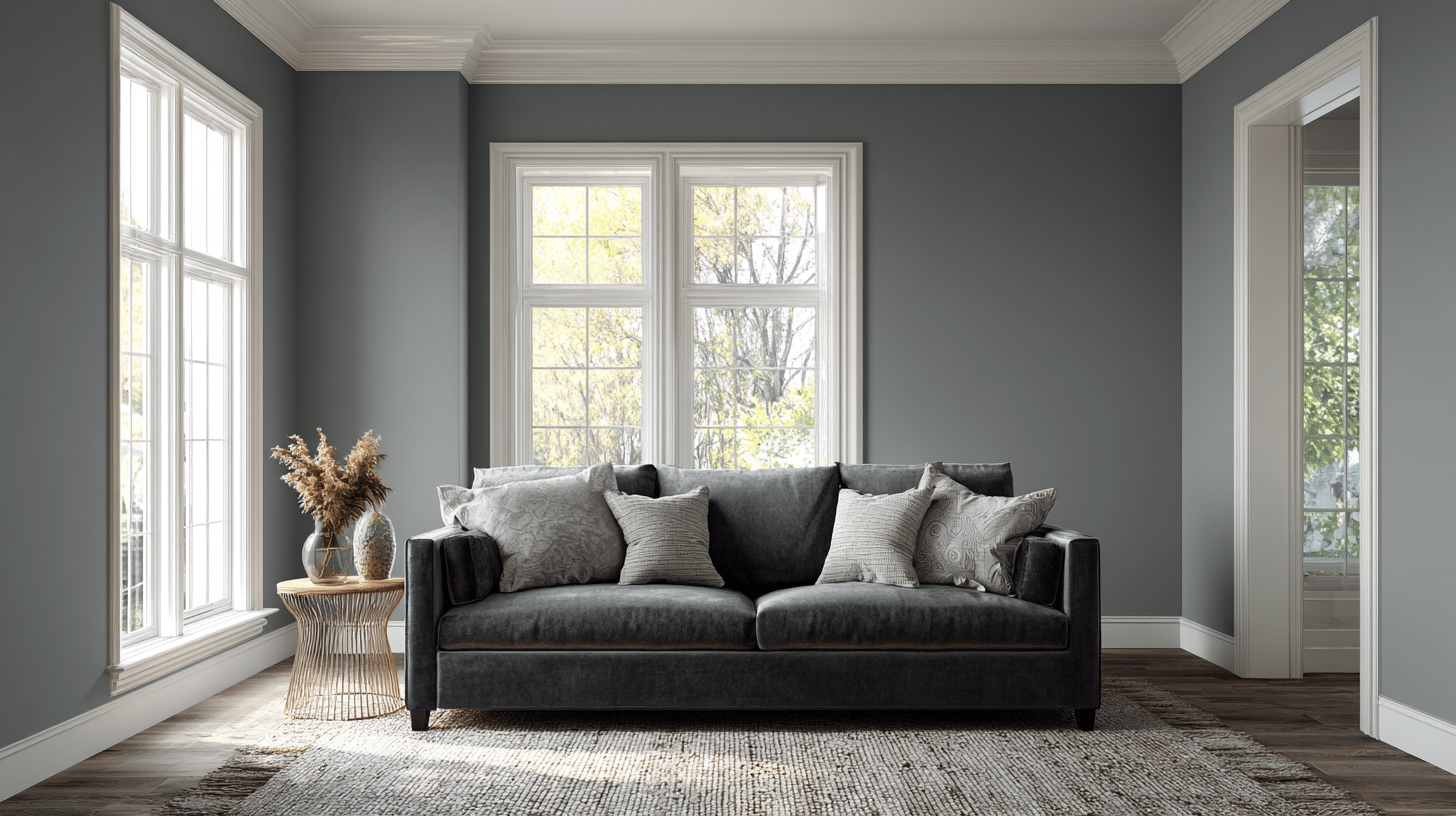Brickmold is the flat, rectangular trim that frames the exterior of doors and windows.
This wooden or composite piece sits between the door frame and the home’s exterior siding, creating a finished appearance while serving critical functional purposes.
The name comes from its original use in brick construction, where it provided a clean transition between door frames and brick walls.
These days, brickmold works with a wide range of siding materials, including vinyl, wood, and fiber cement.
Types of Brickmold Materials
Landowners can choose from several brickmold materials, each offering different benefits for durability, appearance, and maintenance requirements.
Knowing what brickmold is on a door helps in selecting the right material based on climate, budget, and personal preferences.
1. Traditional Wood Brickmold
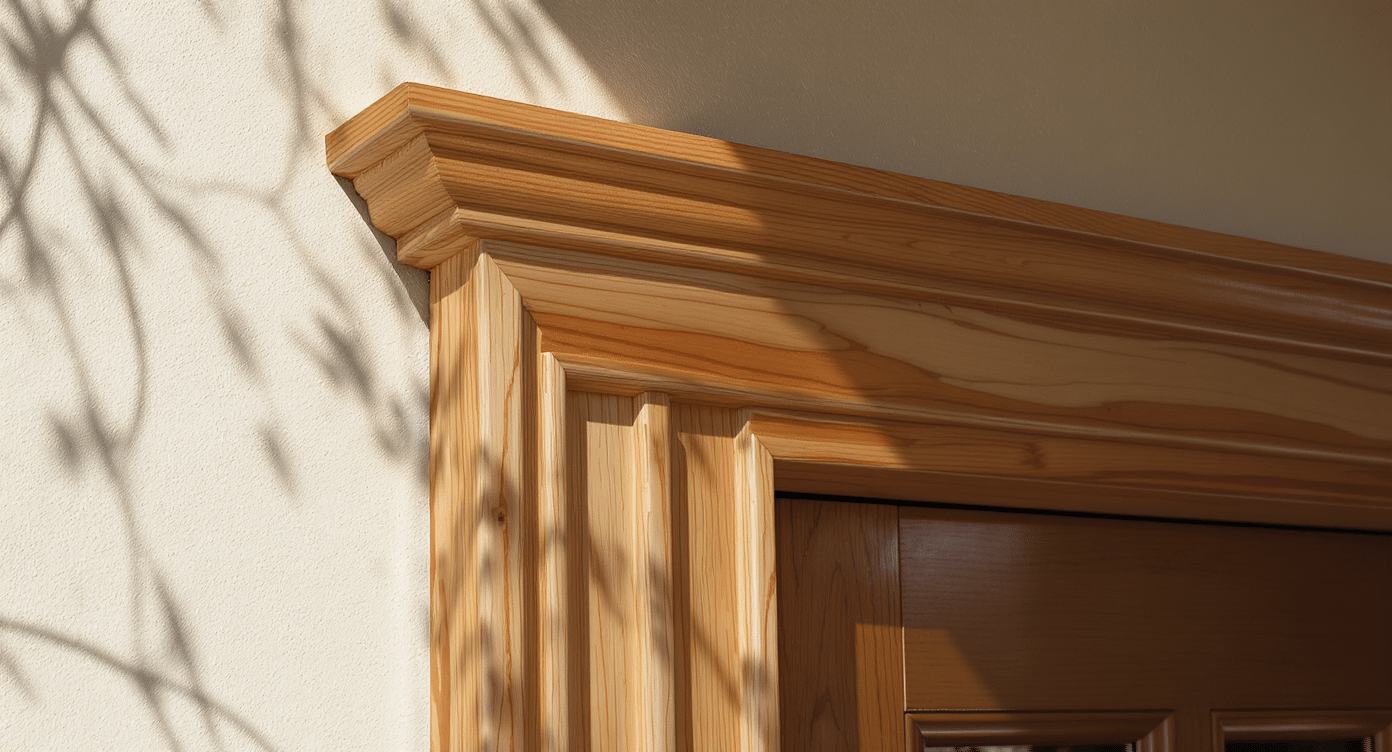
Traditional wood brickmold remains popular for its natural beauty and workability. Pine and fir are the most commonly used species for residential applications.
Wood offers several advantages for homeowners who prefer natural materials:
- Easy to cut, shape, and install with standard tools
- Accepts paint and stain beautifully for custom color options
- Readily available at most home improvement stores
- Cost-effective option for budget-conscious projects
- It can be repaired easily when damaged
2. Composite Brickmold
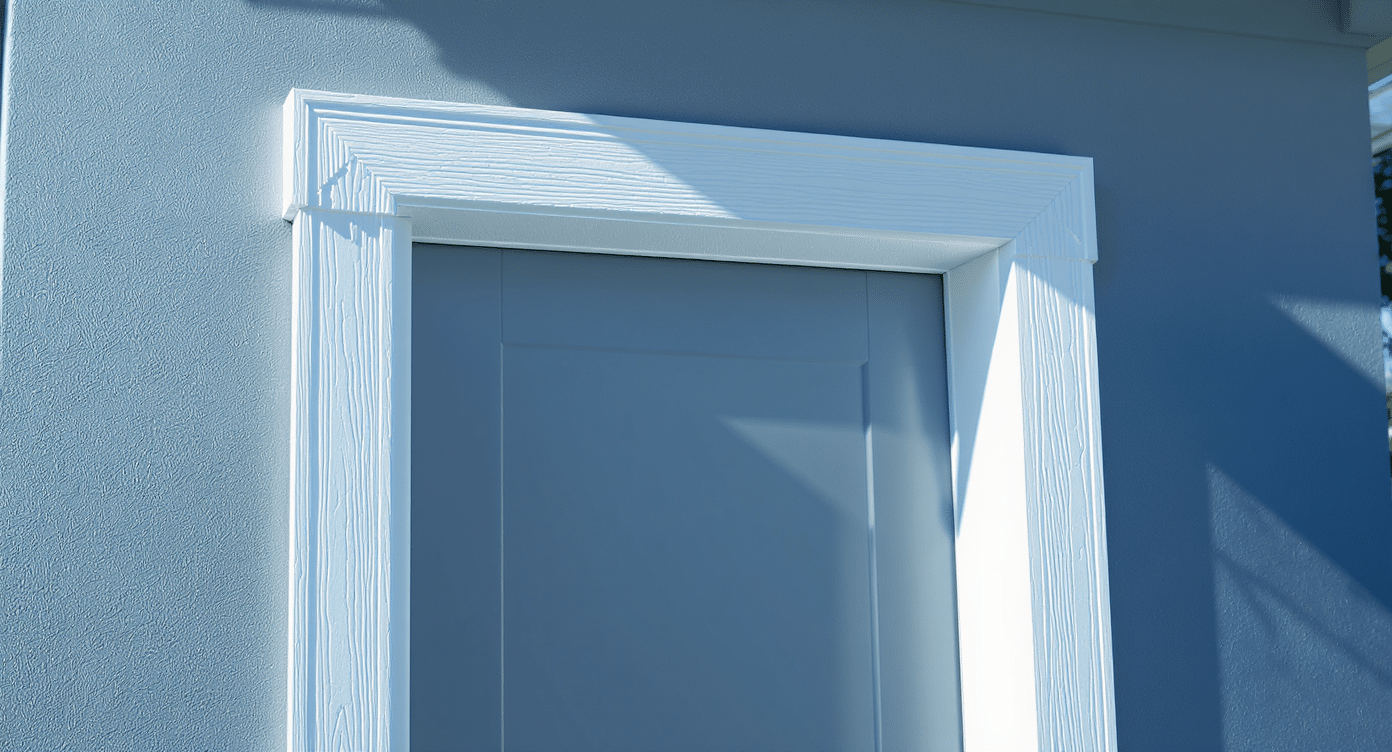
Modern composite materials blend wood fibers with synthetic resins to create low-maintenance alternatives. These engineered products resist moisture and pests better than solid wood.
Key benefits of composite brickmold include:
- Superior resistance to rot, insects, and weather damage
- Minimal maintenance requirements over time
- Consistent dimensions that won’t warp or shrink
- Available in primed or pre-finished options
- Longer lifespan than traditional wood materials
3. PVC Brickmold
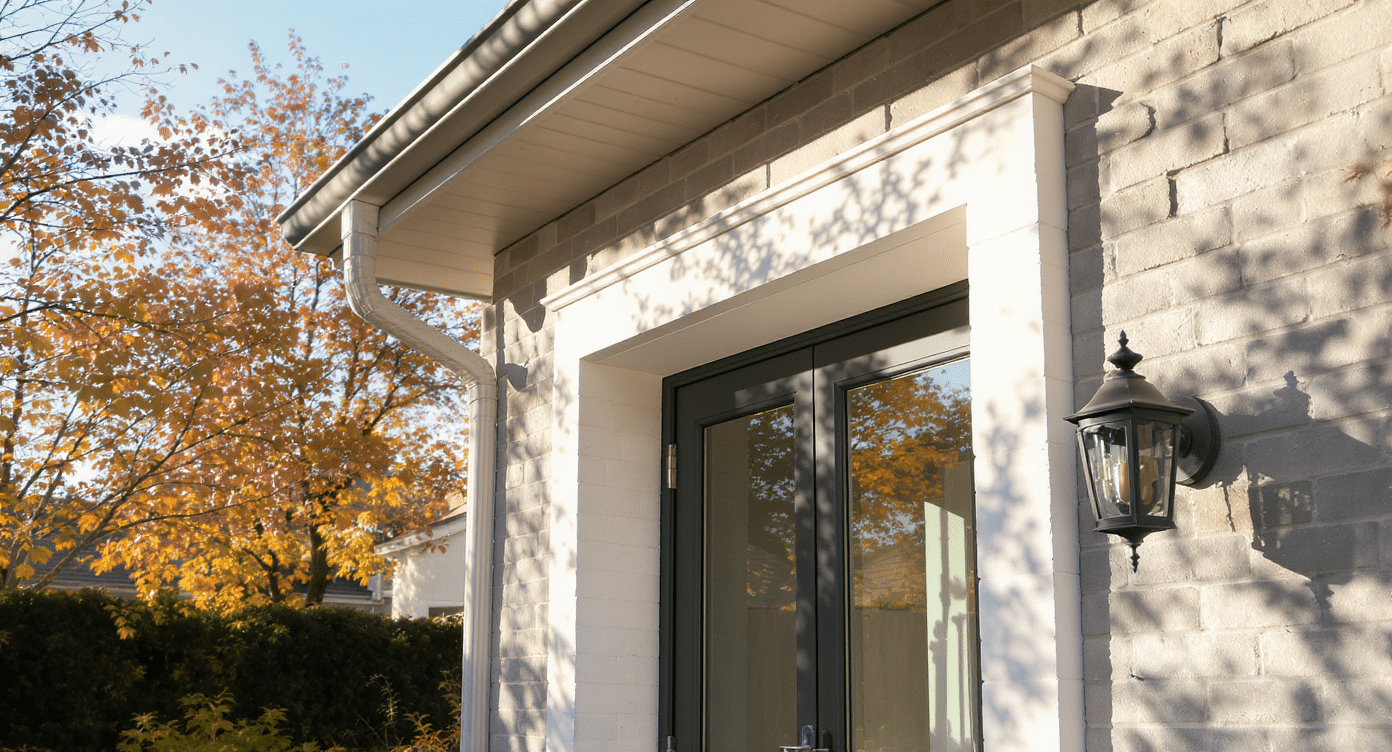
PVC brickmold offers maximum durability in harsh weather conditions. This synthetic material never rots and requires no painting or staining.
Advantages of PVC brickmold:
- Complete resistance to moisture, insects, and rot
- Never needs painting or staining maintenance
- Won’t crack, split, or warp over time
- Easy to clean with soap and water
- Maintains a consistent appearance for decades
4. Fiber Cement Brickmold
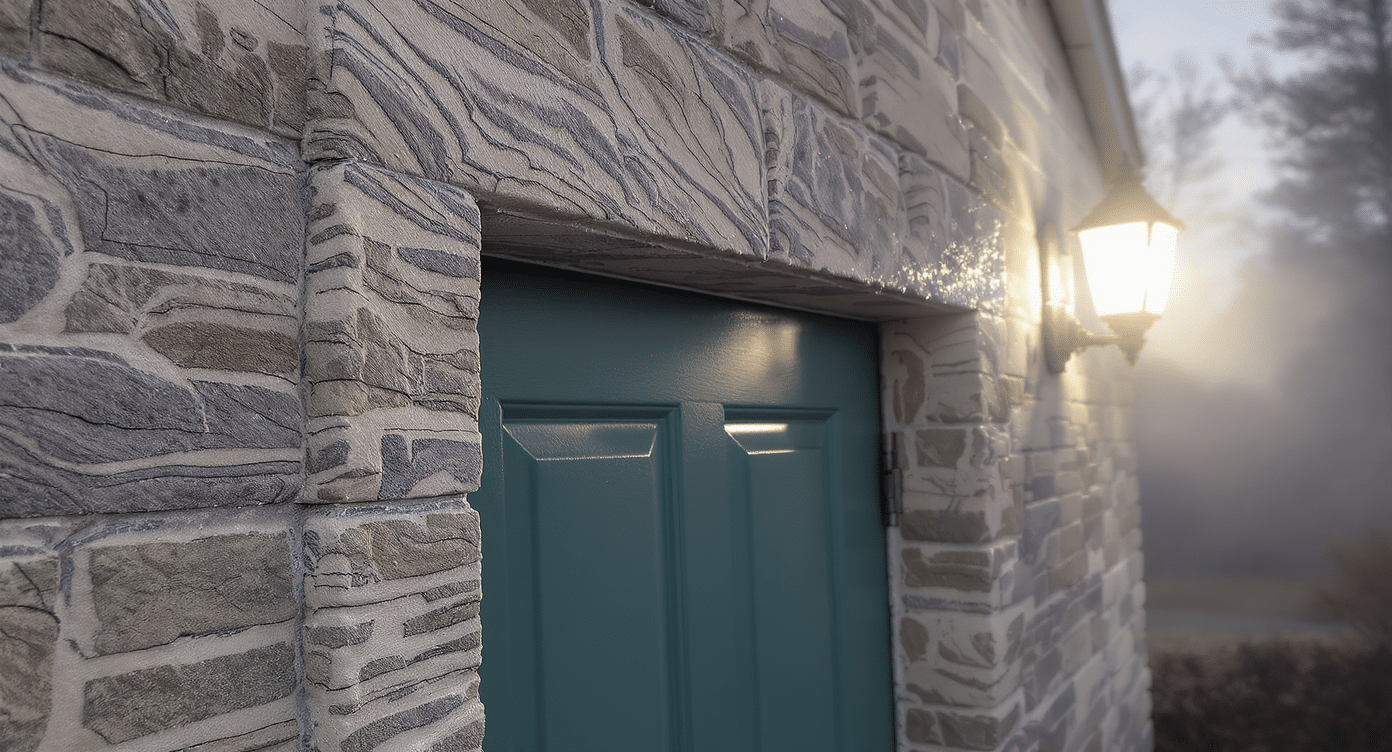
Fiber cement combines wood fibers, cement, and sand to create extremely durable trim. This material withstands extreme conditions, such as heavy winds and other adverse weather conditions, better than most alternatives.
Benefits of fiber cement brickmold:
- Excellent resistance to fire, insects, and rot
- Holds paint longer than wood materials
- Won’t warp, shrink, or expand with temperature changes
- Available in smooth or wood-grain textures
- Provides superior impact resistance
5. Aluminum Brickmold
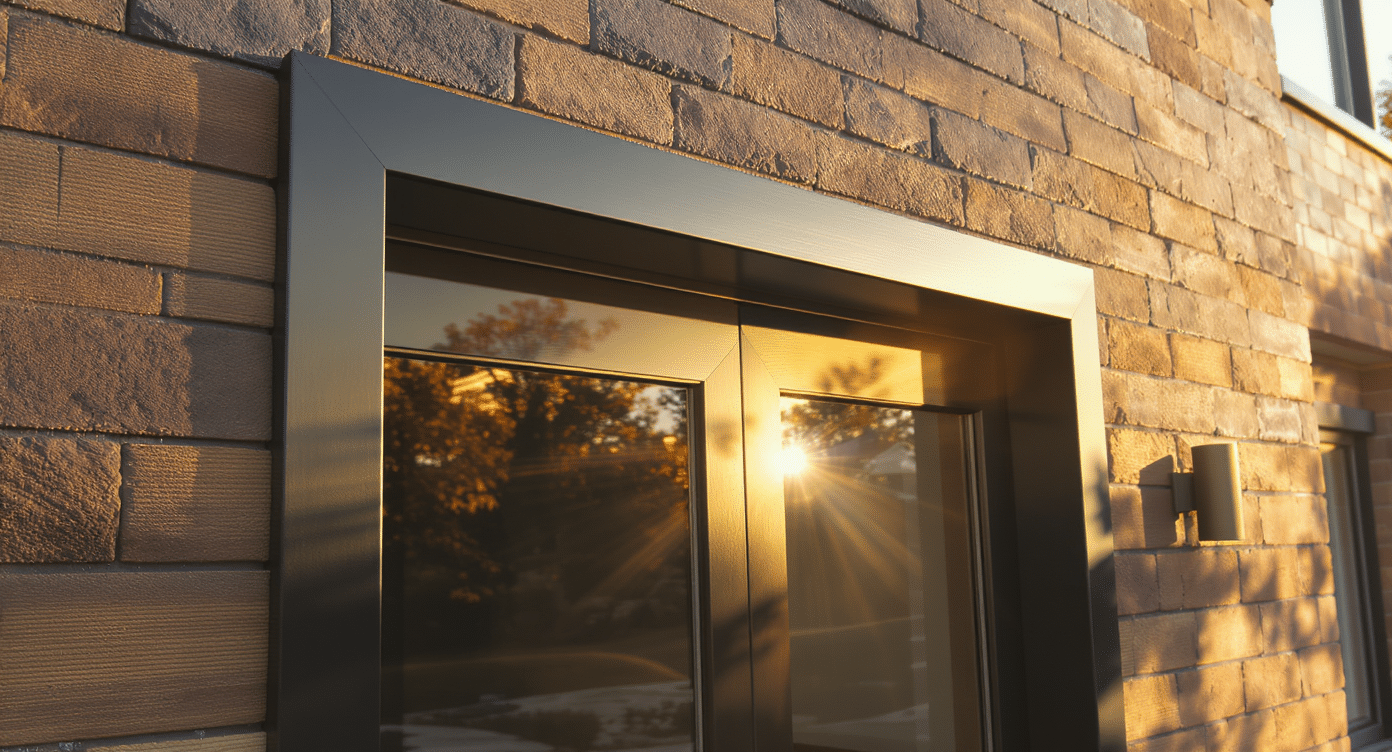
Metal brickmold offers unique benefits for specific applications. Aluminum provides excellent durability with minimal maintenance requirements.
Key features of aluminum brickmold:
- Lightweight yet strong construction
- Available in various colors and finishes
- Never requires painting when powder-coated
- Excellent choice for coastal environments
Benefits and Drawbacks
Choosing between doors with or without brickmold affects both functionality and style.
Knowing the trade-offs helps people make informed decisions for their specific needs.
| Aspect | With Brickmold | Without Brickmold |
|---|---|---|
| Weather Protection | Excellent seal against water and air infiltration | Requires additional weatherstripping and caulking |
| Installation | Easier for DIY projects, pre-attached trim | More complex, requires separate trim installation |
| Appearance | Traditional, finished look out of the box | Clean, modern appearance with custom trim options |
| Cost | Higher upfront cost for the complete unit | Lower door cost, but additional trim expenses |
| Maintenance | Regular painting/staining of exposed wood | Less maintenance if quality materials are used |
| Customization | Limited to the manufacturer’s trim styles | Complete freedom in trim design and materials |
| Replacement | Must replace the entire door unit if the trim fails | Can replace the trim independently of the door |
| Energy Efficiency | Better initial seal performance | Depends on the quality of the separate installation |
The Role of Brickmold in Door Installation
Brickmold plays a critical role during door installation, acting as both a structural component and a weatherproofing element.
Grasping its function helps owners appreciate why proper installation matters for long-term performance.
1. Structural Support – Brickmold provides additional rigidity to the door frame and helps distribute weight evenly across the rough opening
2. Installation Guide – Acts as a reference point for proper door placement and ensures the unit sits flush against the exterior wall
3. Gap Coverage – Conceals the space between the door frame and rough opening, eliminating the need for additional trim work
4. Fastening Surface – Provides a stable platform for securing the door unit to the house framing with screws or nails
5. Flashing Integration – Works with house wrap and flashing materials to create a complete moisture management system
Deciding if Brickmold is the Right Choice
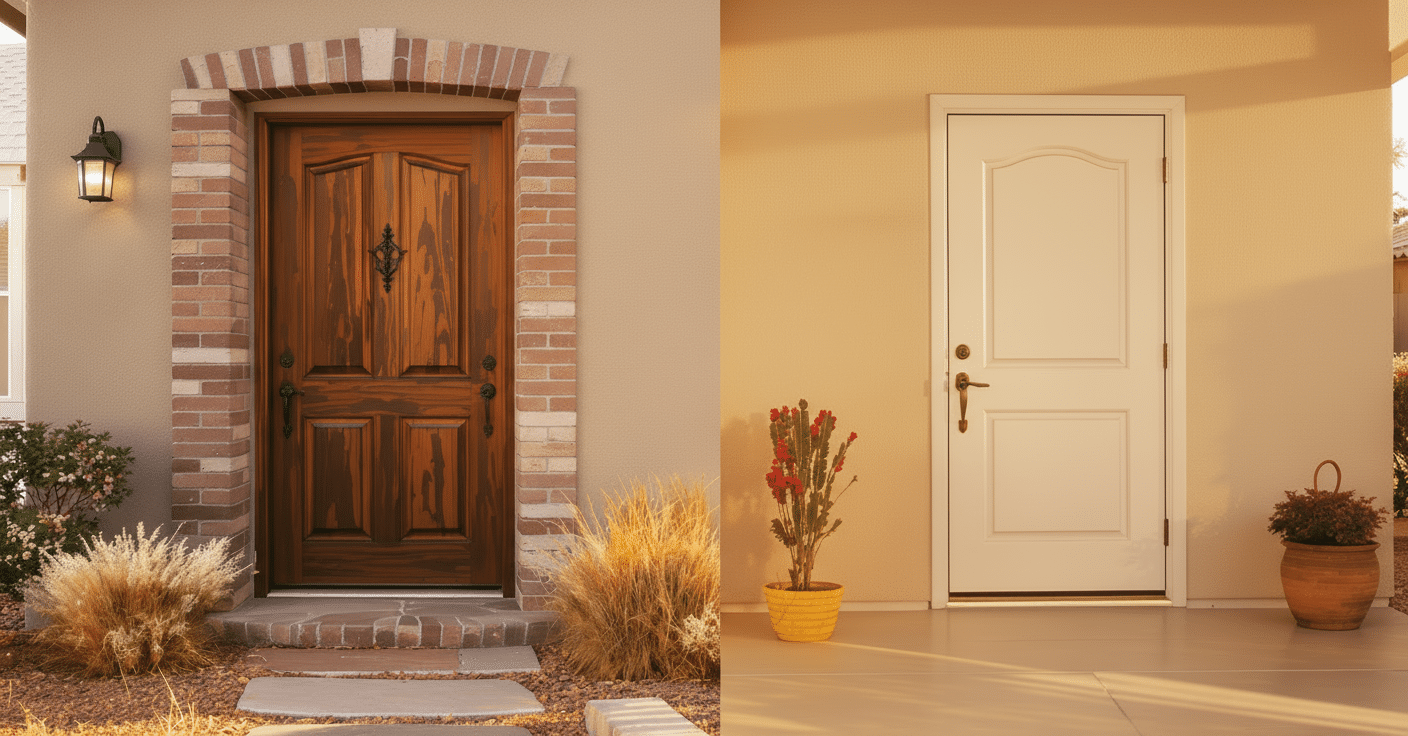
Climate plays a major role in material selection. Homes in wet or humid areas benefit from Brickmold’s weather protection, while those in dry climates may allow for more flexibility.
Budget considerations matter too – brickmold doors cost more upfront but save on separate trim installation.
Architectural style affects the decision. Traditional homes often look best with classic brickmold profiles, while modern designs might prefer clean lines without visible trim.
Maintenance preferences also factor in, as some materials require regular upkeep while others stay maintenance-free.
Consider your DIY skills as well. Brickmold doors simplify installation for beginners, whereas trimless doors offer customization opportunities for experienced builders who want unique looks.
Expert Tips and Real Homeowner Experiences
Learning from professionals and owners who’ve worked with brickmold provides valuable insights for making the right choice.
Real-world experiences often reveal practical considerations that specifications don’t cover.
- Professional Installation Advice – Contractors recommend checking wall plumb before installation and using at least five shims per door jamb to prevent sagging over time
- Material Selection Wisdom – Experts suggest choosing PVC or composite brickmold in humid climates to avoid rot issues that plague traditional wood options
- Titleholder Success Stories – Many DIYers report that prehung doors with brickmold simplify storm door installation and provide better attachment points
- Common Mistake Prevention – Experienced installers emphasize proper caulking around all edges and supporting thresholds with treated lumber for longevity
- Maintenance Reality Check – Landowners with wood brickmold warn about annual painting requirements, while those who switched to composite materials praise the reduced upkeep
- Cost-Benefit Feedback – Real users note that while brickmold doors cost more initially, they save time and labor during installation compared to separate trim work
- Repair Experiences – Owners successfully fix loose or damaged sections by cutting out problem areas and replacing them with matching materials
Finishing It Up
Brickmold serves as more than just decorative trim – it’s a functional component that protects your home from weather while adding a touch of style.
From traditional wood to modern composites, each material offers distinct advantages for different climates and budgets.
Start by evaluating your current door’s condition and consider which brickmold option best suits.
Share your brickmold experiences or questions in the comments below – we’d love to hear about your door projects!

